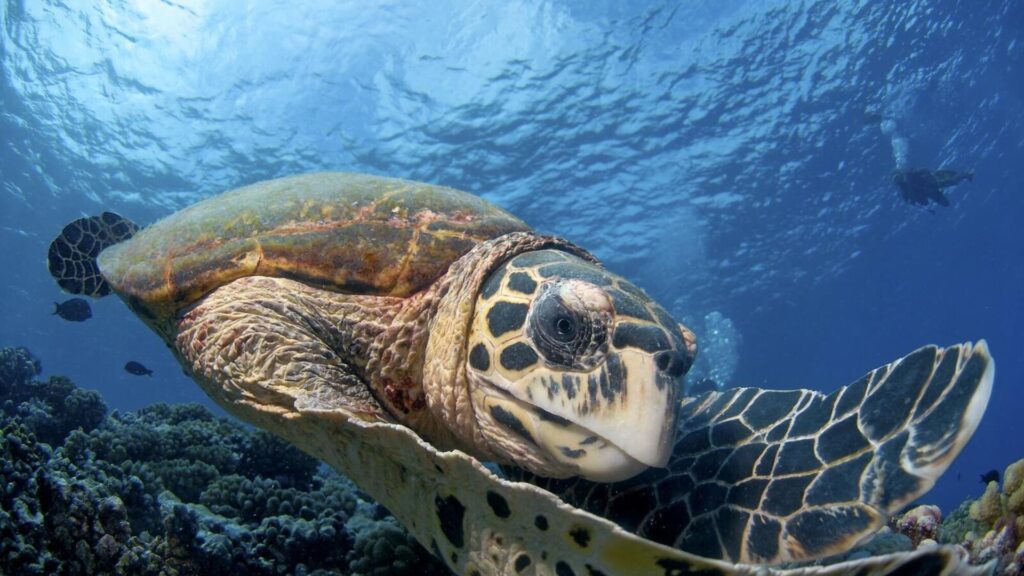As the world races to achieve the 30×30 target of the Kunming-Montreal Global Biodiversity Framework — which aims to protect 30 per cent of marine areas by 2030 — a new scientific study is raising concerns about the limitations of traditional Marine Protected Areas (MPAs). Published in Science Advances on June 25, 2025, the study reveals that climate change is driving sea turtles away from their long-established habitats, exposing them to new threats in high-risk zones outside protected regions.
Researchers Edouard Duquesne and Denis Fournier from Université Libre de Bruxelles analyzed over 27,000 sea turtle sightings alongside more than one billion ship location data points. Their comprehensive research uncovered a stark reality: only 23 per cent of key sea turtle habitats currently fall within MPAs, many of which are inadequately managed. The Marine Protection Atlas notes that although over 8 per cent of the ocean is designated as MPAs, only about 3 per cent are effectively governed.
One of the major findings of the study is that as ocean temperatures rise, sea turtles are shifting their ranges towards cooler waters — areas not yet under formal protection. This movement is pushing them into busy marine traffic corridors such as the North Sea, East China Sea, Mediterranean, and waters near the Galápagos Islands, where they face increased risks of fatal vessel strikes.
The danger is amplified by projections that global maritime traffic could increase by up to 1,200 per cent by 2050, significantly raising the odds of turtle-ship collisions. The researchers warn that unless conservation strategies evolve rapidly, the situation for sea turtles will deteriorate further.
Using the Intergovernmental Panel on Climate Change’s Shared Socioeconomic Pathways (SSPs), the researchers modeled how different climate futures could affect turtle habitats. Even under the optimistic SSP1-2.6 scenario, over half of today’s sea turtle hotspots could disappear by mid-century. Under the worst-case scenario (SSP5-8.5), species like the loggerhead (Caretta caretta) and leatherback (Dermochelys coriacea) may lose up to 67 per cent of their current habitats. However, some species, like the green turtle (Chelonia mydas), may expand into newly viable cooler regions.
Duquesne and Fournier emphasize the need for conservation strategies that move beyond fixed geographic zones. They advocate for flexible, real-time conservation methods that can adapt to changing oceanic conditions. Drawing on successful examples like the WhaleWatch program on the US West Coast and California’s Blue Whales and Blue Skies initiative, they suggest similar dynamic frameworks could be implemented for sea turtles. These programs use satellite tracking and ocean data to regulate ship speeds and reduce both emissions and marine wildlife collisions.
Port authorities in Los Angeles, Oakland, and Vancouver have even launched incentive schemes that reward slower vessel speeds in critical habitats, showcasing a collaborative, incentive-driven model for marine conservation.
The researchers recommend a three-pronged approach to meet biodiversity targets while ensuring the safety of vulnerable marine species:
- Expand MPAs to include projected future turtle habitats, particularly within national Exclusive Economic Zones (EEZs).
- Develop climate-smart MPAs that can shift location and size based on real-time data and emerging habitat trends.
- Integrate marine protection with shipping policy, including mandatory speed reductions in high-risk areas to minimize vessel strikes.
As highlighted at the Third UN Ocean Conference held earlier this month, the urgency to redesign marine conservation has never been greater. The study underscores the need for a new generation of MPAs — adaptive, data-informed, and climate-resilient — to safeguard migratory species like sea turtles.
“This research offers a scientific roadmap for transitioning from static marine protections to dynamic conservation that moves with the species,” Duquesne noted. “To truly safeguard marine biodiversity under climate change, we must protect turtles where they are going — not just where they’ve been.”

